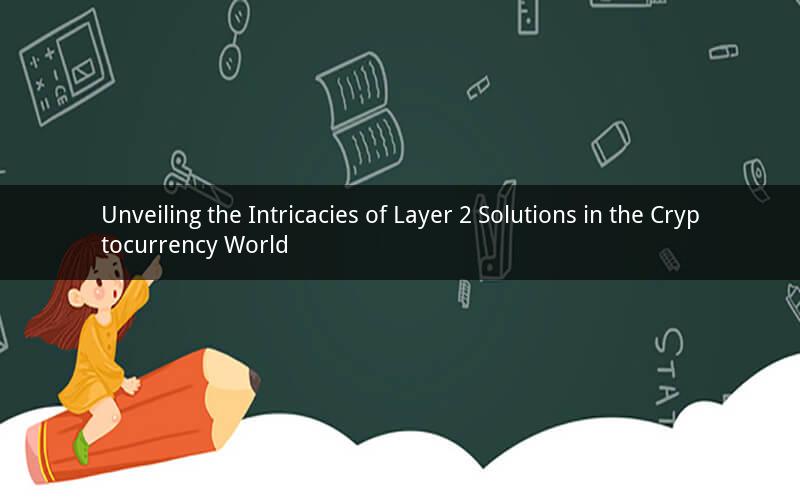
In the rapidly evolving landscape of cryptocurrencies, Layer 2 solutions have emerged as a crucial component for addressing the scalability issues of blockchain networks. These solutions aim to enhance the efficiency and cost-effectiveness of transactions, making blockchain more accessible to a wider audience. This article delves into the concept of Layer 2 solutions, their significance in the cryptocurrency world, and their potential impact on the future of blockchain technology.
Understanding Layer 2 Solutions
To comprehend Layer 2 solutions, it is essential to first grasp the concept of blockchain scalability. Blockchain scalability refers to the ability of a blockchain network to handle an increasing number of transactions without compromising its performance. However, the inherent limitations of blockchain technology, such as the Proof of Work (PoW) consensus mechanism, have made achieving scalability a significant challenge.
Layer 2 solutions aim to address this challenge by building on top of the existing blockchain infrastructure. They operate as secondary networks that run parallel to the main blockchain, known as the Layer 1. By offloading some of the transaction processing to Layer 2, these solutions can significantly improve the overall efficiency and speed of the blockchain network.
Types of Layer 2 Solutions
There are several types of Layer 2 solutions, each with its unique approach to enhancing blockchain scalability. Some of the most prominent Layer 2 solutions include:
1. State Channels: State channels enable parties to conduct multiple transactions off-chain, reducing the load on the main blockchain. Once the off-chain transactions are completed, a single transaction is recorded on the Layer 1 blockchain, known as a "commitment transaction."
2. Rollups: Rollups aggregate multiple transactions into a single batch, which is then submitted to the Layer 1 blockchain. This method reduces the number of transactions that need to be processed on the main blockchain, thereby improving scalability.
3. Sidechains: Sidechains are separate blockchains that operate independently of the main blockchain but can interact with it. Transactions on sidechains can be bridged to the main blockchain, allowing for cross-chain communication.
4. Plasma: Plasma is a framework for building scalable blockchains that operate as child chains to a main blockchain. It allows for off-chain transaction processing, with periodic checkpoints to the main blockchain to ensure security.
The Significance of Layer 2 Solutions
Layer 2 solutions have several significant advantages in the cryptocurrency world:
1. Improved Scalability: By offloading transaction processing to Layer 2, blockchain networks can handle a higher volume of transactions without compromising their performance.
2. Reduced Costs: Layer 2 solutions can significantly reduce transaction fees, making blockchain more accessible to a wider audience.
3. Enhanced Privacy: Some Layer 2 solutions offer improved privacy features, as transactions are conducted off-chain and not recorded on the main blockchain.
4. Cross-Chain Compatibility: Layer 2 solutions can facilitate cross-chain communication, allowing for interoperability between different blockchain networks.
5. Faster Transaction Speeds: Layer 2 solutions can significantly improve transaction speeds, as off-chain transactions are processed much faster than on-chain transactions.
The Future of Layer 2 Solutions
As the cryptocurrency world continues to grow, Layer 2 solutions are expected to play a crucial role in the future of blockchain technology. The following trends are likely to shape the future of Layer 2 solutions:
1. Increased Adoption: With the growing demand for scalable and cost-effective blockchain solutions, the adoption of Layer 2 solutions is expected to rise.
2. Enhanced Security: As Layer 2 solutions become more prevalent, developers will focus on enhancing their security features to ensure the integrity of the blockchain network.
3. Interoperability: Efforts to achieve interoperability between different Layer 2 solutions and blockchain networks will become more significant, allowing for seamless cross-chain communication.
4. Innovation: The continuous innovation in Layer 2 solutions will lead to the development of new and improved technologies that can further enhance the scalability and efficiency of blockchain networks.
5. Regulatory Compliance: As blockchain technology gains wider acceptance, regulatory bodies will likely impose stricter regulations on Layer 2 solutions, ensuring compliance with existing laws and regulations.
FAQs about Layer 2 Solutions in Crypto
1. What is the main advantage of Layer 2 solutions?
The main advantage of Layer 2 solutions is their ability to enhance blockchain scalability by offloading transaction processing to a secondary network, thereby reducing the load on the main blockchain.
2. How do state channels work?
State channels enable parties to conduct multiple transactions off-chain. Once the off-chain transactions are completed, a single transaction is recorded on the Layer 1 blockchain, known as a "commitment transaction."
3. Can Layer 2 solutions improve privacy?
Yes, some Layer 2 solutions offer improved privacy features, as transactions are conducted off-chain and not recorded on the main blockchain.
4. Are Layer 2 solutions secure?
Layer 2 solutions can be secure, but it depends on the specific implementation and the security measures in place. Developers are continuously working to enhance the security features of Layer 2 solutions.
5. How do Layer 2 solutions impact transaction fees?
Layer 2 solutions can significantly reduce transaction fees, making blockchain more accessible to a wider audience. This is because off-chain transactions are generally cheaper than on-chain transactions.